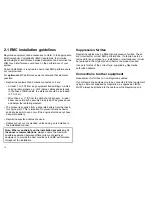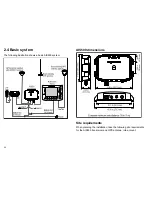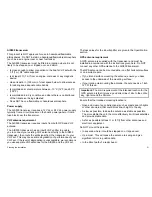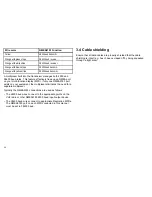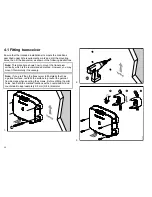
System information
Warning: AIS limitation
Never assume that your AIS is detecting all vessels
in the area. Always exercise due prudence and do
not use AIS as a substitute for sound navigational
judgement.
Overview
The AIS500 uses digital radio signals to exchange ’real-time’
information between vessels and shore based stations on dedicated
VHF frequencies. This information is used to identify and track
vessels in the surrounding area and to provide fast, automatic and
accurate collision avoidance data.
Although AIS augments your radar application by operating in radar
blind spots and detecting smaller AIS-fitted vessels, it does not
replace radar, as it relies on receiving transmitted AIS information
and therefore cannot detect objects such as landmasses and
navigational beacons.
NEVER assume that AIS is displaying information from all vessels
in the area, because:
• Not all vessels are fitted with AIS
• Although it is mandatory for larger commercial vessels to carry
AIS, it is not mandatory to use it.
AIS should be used only to augment radar information, not substitute
it.
Classes of AIS
Your AIS500 is a transceiver that receives messages from and
transmits messages to vessels carrying Class A or Class B
transceivers.
Class A Transceivers
Class A AIS transceivers transmit and receive AIS signals. AIS
transceivers are currently mandatory on all commercial vessels
exceeding 300 tons that travel internationally (SOLAS vessels).
The following information can be transmitted by a Class A AIS
system:
• Static data. Includes information such as vessel name, vessel
type, MMSI number, call sign, IMO number, length, beam and
GPS antenna location.
• Voyage related data. Includes information such as draft, cargo,
destination, ETA and other relevant information.
• Dynamic data. Includes information such as time (UTC), ship’s
position, COG, SOG, heading, rate of turn and navigational status.
• Dynamic reports. Ship’s speed and status.
• Messages. Alarms and safety messages.
Remember that not all vessels will transmit all of the information.
Class B Transceivers
Class B AIS transceivers transmit and receive AIS signals, but use
a reduced set of data compared to Class A (see
Data Summary
). A
Class B AIS transceiver can be fitted on any vessel not fitted with a
Class A transceiver, but is not mandatory aboard any vessel.
Your AIS500 transceiver is a Class B transceiver.
Data Summary
Data
Class A
(receive)
Class B
(send)
Class B
(receive)
Ship’s name
Yes
Yes
Yes
Type
Yes
Yes
Yes
Introduction
13
Содержание AIS500
Страница 1: ...AIS500 Transceiver Installation instructions AUTOMATIC IDENTIFICATION SYSTEM...
Страница 2: ......
Страница 4: ......
Страница 6: ...6...
Страница 16: ...16...
Страница 34: ...D11649 1 Red Black Power supply Power supply Connect to 12 V dc or 24 V dc 34...
Страница 42: ...42...
Страница 46: ...46...
Страница 47: ......
Страница 48: ...www raymarine com...


















